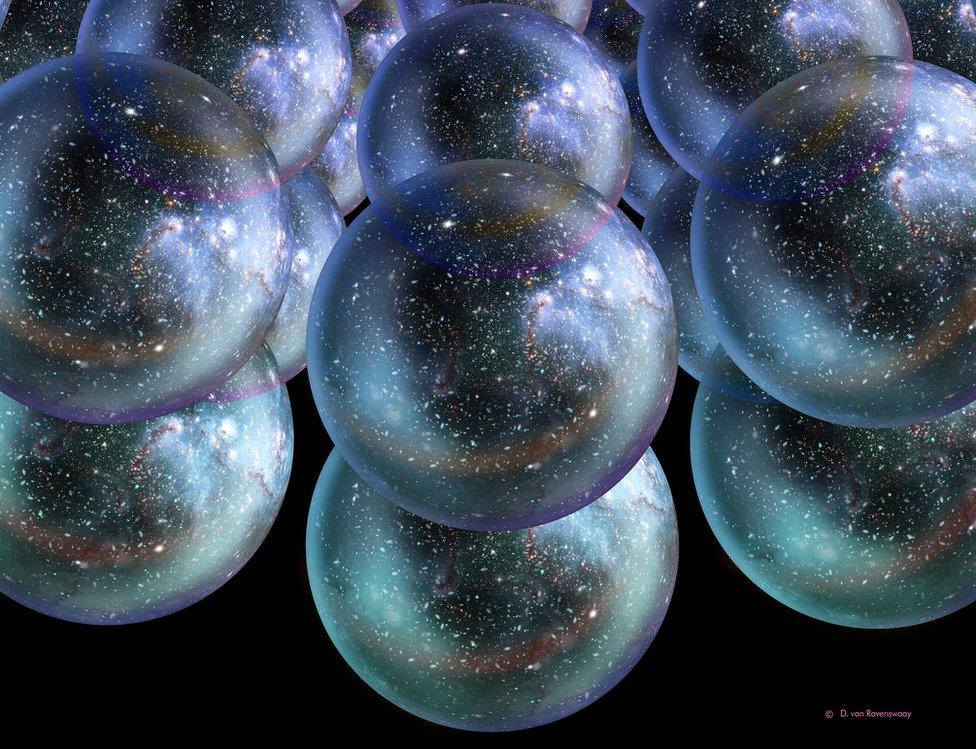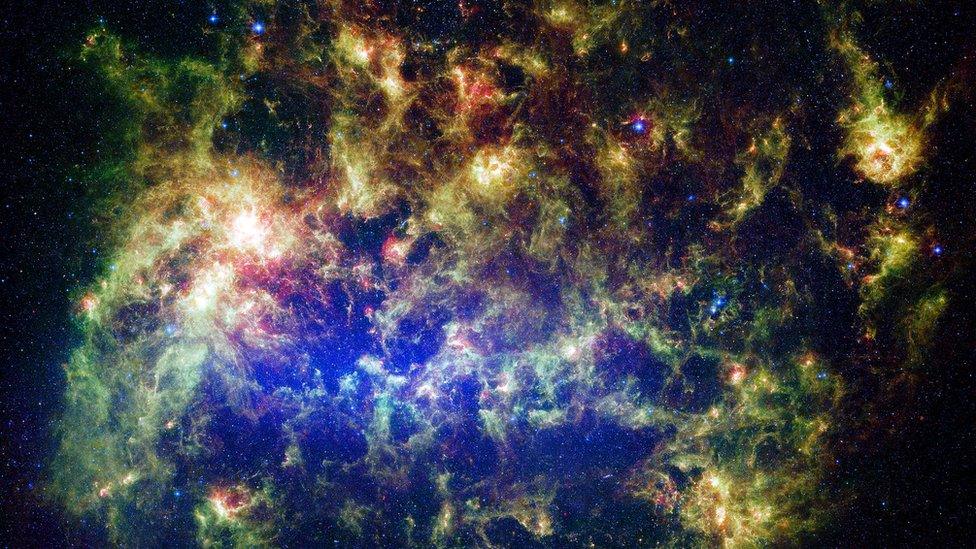Prof Stephen Hawking's multiverse finale
- Published
- comments
The BBC's Pallab Ghosh explains how Prof Stephen Hawking's final paper resolved a cosmic conundrum
Prof Stephen Hawking's final research paper suggests that our Universe may be one of many similar to our own.
The theory resolves a cosmic paradox of the late physicist's own making.
It also points a way forward for astronomers to find evidence of the existence of parallel universes.
The study was submitted to the Journal of High-Energy Physics, external 10 days before Prof Hawking died.
In the 1980s, the Cambridge scientist, along with US physicist James Hartle developed a new idea about the beginning of the Universe.
This resolved a difficulty with Einstein's theory that suggested that the Universe began nearly 14 billion years ago but said nothing about how it began.
Instead, the Hartle-Hawking idea used a different theory called quantum mechanics to explain how the Universe arose from nothingness.
The idea tied up one loose end but created another - an infinite number some might say.
As physicists analysed the idea it emerged that it carried with it the implication that the Big Bang would create not just one universe - but an endless supply.

Artwork: The Big Bang may have created many universes
Some, according to the Hartle-Hawking theory, would be very like our own, perhaps have Earth-like planets, societies, even individuals similar to the ones in our Universe.
Other universes would be subtly different - perhaps with Earth-like planets where dinosaurs were not wiped out. And there would be universes completely unlike our own, with no Earths, perhaps no stars and galaxies and different laws of physics.
It sounds far-fetched, but the equations in this theory make such scenarios theoretically possible.
A crisis arises because if there are infinite types of universes with infinite variations in their laws of physics then the theory cannot predict what kind of universe we should find ourselves in.
Prof Hawking joined forces with Prof Thomas Hertog at KU Leuven in Belgium, who is funded by the European Research Council to try to resolve this paradox.
"Neither Stephen nor I were happy with that scenario," he told BBC News.
"It suggests that the multiverse emerged randomly and that we can't say very much more about that. We said to each other: 'Maybe we have to live with it'. But we didn't want to give up."

Prof Hawking's final paper may help researchers discover evidence of parallel universes
Prof Hawking's final paper is the fruit of 20 years' work with Prof Hertog.
It has solved the puzzle by drawing on new mathematical techniques developed to study another esoteric branch of physics called string theory.
These techniques enable researchers to view physics theories in a different way. And the novel assessment of the Hartle-Hawking theory in the new paper has restored order to a hitherto chaotic multiverse.
The new Hawking-Hertog assessment indicates that there can only be universes that have the same laws of physics as our own.
That conjecture means that our Universe is typical and so observations we make from our viewpoint will be meaningful in developing our ideas of how other universes emerged.
Mind-bending as these ideas are, they will be of real help to physicists as they develop a more complete theory of how the Universe came into being, according to Prof Hertog.
"The laws of physics that we test in our labs did not exist forever. They crystallised after the Big Bang when the universe expanded and cooled. The kind of laws that emerge depends very much on the physical conditions at the Big Bang. By studying these we aim to get a deeper understanding of where our physical theories come from, how they arise, and whether they are unique."
One tantalising implication of the findings, according to Prof Hertog, is that it might help researchers detect the presence of other universes by studying the microwave radiation left over from the Big Bang - though he says that he does not think it will be possible to hop from one universe to another.